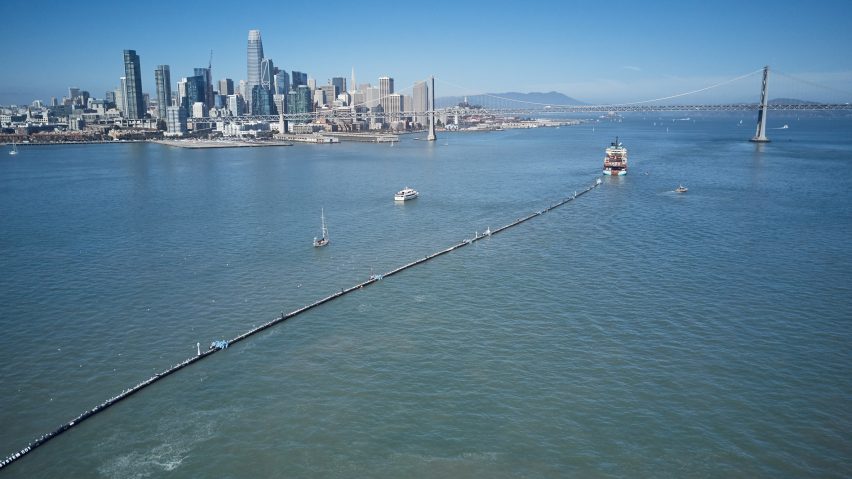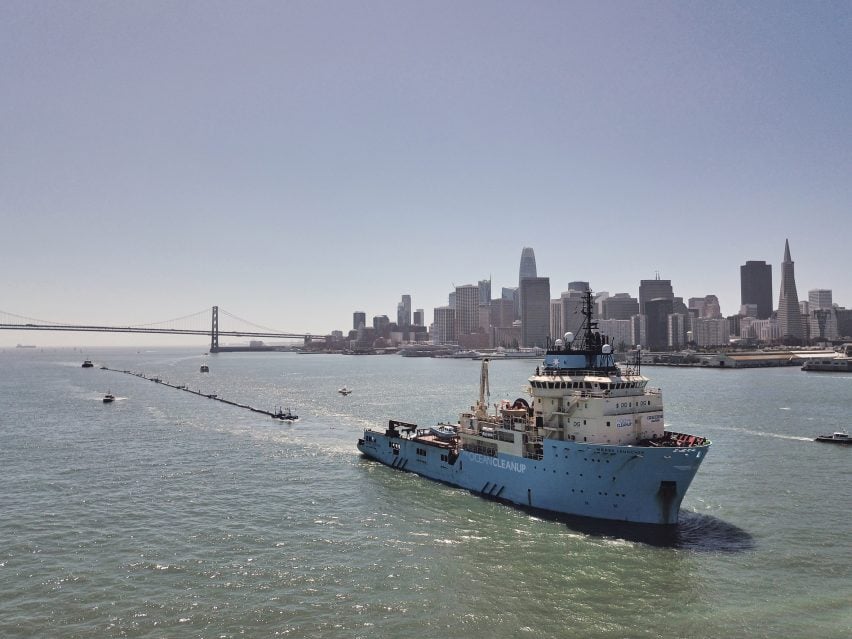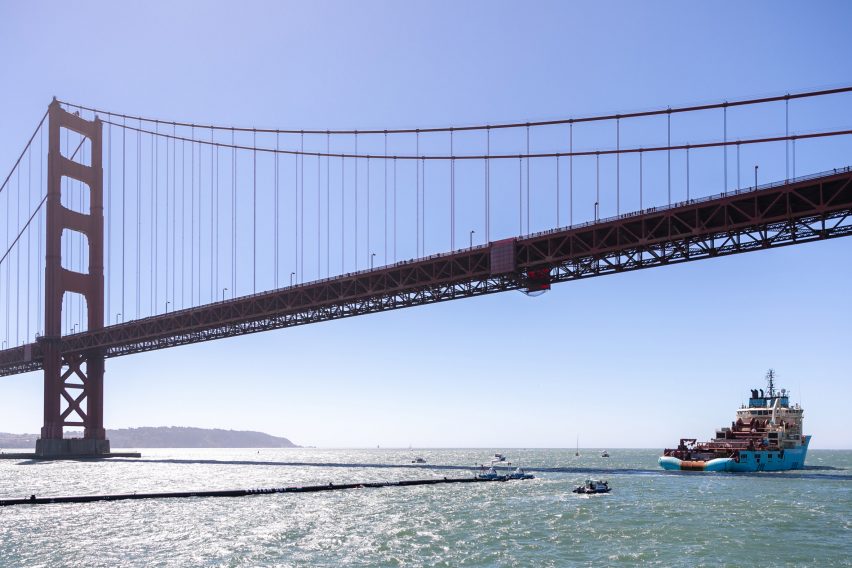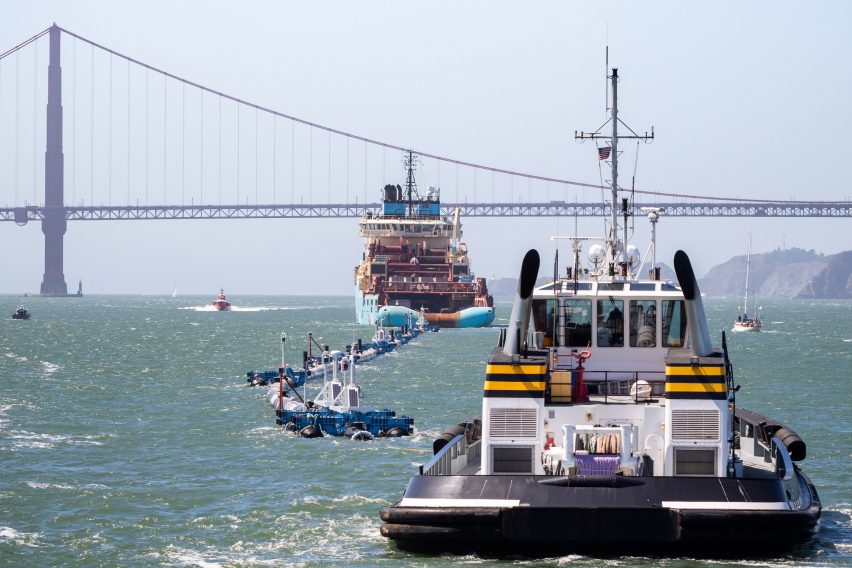
The Ocean Cleanup dispatches "giant Pac-Man" to remove plastic from the Pacific
The first large-scale operation to scoop waste plastic from the Pacific Ocean has set off from San Francisco.
The Ocean Cleanup – a Dutch non-profit initiative aiming to rid the seas of plastic litter – launched its System 001 equipment on 8 September 2018.
Towed from San Francisco Bay by the vessel Maersk Launcher, the 2,000-foot-long (600-metre), U-shaped floating barrier with a 10-foot (three-metre) "skirt" below will be dragged along the water's surface to collect up the waste.

Once it reaches its destination, the system is designed to be propelled by wind and waves, so it gathers plastic as it moves through the ocean.
"Due to its shape, the debris will be funnelled to the centre of the system," said a statement from the organisation. "Moving slightly faster than the plastic, the system will act like a giant Pac-Man, skimming the surface of the ocean."
Operation targets Great Pacific Garbage Patch
The operation's target is the Great Pacific Garbage Patch – a concentration of plastic debris moved into one place by ocean currents known as gyres.
Located halfway between California and Hawaii, the patch reportedly contains 1.8 trillion pieces of plastic, and covers an area twice the size of Texas.
Initially, the system will sail 240 nautical miles from shore for 14 days of trials in its U-shaped configuration. The team will then have the option to turn back if the tests are unsuccessful.

But the hope is that they will continue out 1,200 nautical miles offshore to the garbage patch, where the real cleanup will begin.
"This will mark the first time that free floating plastic will have been successfully collected at sea," The Ocean Cleanup said.
Collected plastic to be returned in six months
The organistation anticipates that the first batches of plastic will be returned to land in six months, when the waste will be recycled into products that can be sold to help fund future operations.
Towing trails were completed 50 nautical miles off the coast earlier this year, when the barrier was deployed to 120 metres in length.
"Hundreds of scale-model tests, a series of prototypes, research expeditions and multiple iterations have led to The Ocean Cleanup having sufficient confidence in its technology to launch its first full-scale cleanup system," said the statement.
During the current mission, which is viewed as a proof-of-concept initiative, performance data will be collected to ascertain any design improvements that could be made for future deployments.
"The system is equipped with solar-powered and satellite-connected sensors, cameras and navigation lights to communicate the position of System 001 to passing marine traffic, and enable extensive monitoring of the system and the environment," said the team.
The Maersk Launcher vessel will also remain as an observation base for the project for several weeks after the floating device is deployed.
Project will be expanded if successful
The system was first proposed by Dutch engineer Boyan Slat in 2013, and was shortlisted for the 2015 Design of the Year award. Now founder and CEO of The Ocean Cleanup, Slat has met his target to start operations in 2018.
"[The] launch is an important milestone, but the real celebration will come once the first plastic returns to shore," said Slat. "For 60 years, mankind has been putting plastic into the oceans; from that day onwards, we're taking it back out again."
If this first system is successful, and funding is made available, up to 60 more could be sent to the Great Pacific Garbage Patch over the next two years.

"The Ocean Cleanup projects that the full fleet can remove half of the plastic in the Great Pacific Garbage Patch within five years' time," the organisation said. "This is in line with The Ocean Cleanup's ultimate goal: reducing the amount of plastic in the world's oceans by at least 90 per cent by 2040."
Recent efforts to highlight ocean plastic as a growing environmental issue have come from several sources across the design industry. Companies like Parley for the Oceans have collaborated with international brands including Adidas, Stella McCartney and Corona to release products made from the recycled material, in the hope to raise awareness of the problem.
Designers that have used plastic retrieved from the sea to create furniture and home accessories include Spark & Burnish, Brodie Neill and Studio Swine.